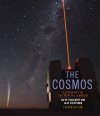Textbook
Out of Print
By: Jay M Pasachoff(Author), Alex Filippenko(Author)
600 pages, 739 colour & 409 b/w photos and illustrations, 5 colour maps
![The Cosmos The Cosmos]()
Click to have a closer look
About this book
Contents
Biography
Related titles
About this book
An exciting introduction to astronomy, the fourth edition of this book uses recent discoveries and stunning photography to inspire non-science majors about the Universe. Written specifically for a one-semester course by two highly experienced and engaging instructors, each chapter has been fully updated, with more than 200 new images throughout, including recent images from space missions and the world's best observatories. The newly redesigned text is organized as a series of stories, each presenting the history of the field, the observations made and how they fit within the process of science, our current understanding and what future observations are planned. Math is provided in boxes and easily read around, making the book suitable for courses taking either mathematical or qualitative approaches. New discussion questions encourage students to think widely about astronomy and the role science plays in our everyday lives and podcasts for each chapter aid studying and comprehension.
Contents
Preface
About the authors
1. A grand tour of the heavens
2. Light, matter and energy: powering the Universe
3. Light and telescopes: extending our sense
4. Observing the stars and planets: clockwork of the Universe
5. Gravitation and motion: the early history of astronomy
6. The terrestrial planets: Earth, Moon, and their relatives
7. The Jovian planets: windswept giants
8. Pluto, comets, and space debris
9. Our Solar System and others
10. Our star: the Sun
11. Stars: distant suns
12. How the stars shine: cosmic furnaces
13. The death of stars: recycling
14. Black holes: the end of space and time
15. The Milky Way: our home in the Universe
16. A Universe of galaxies
17. Quasars and active galaxies
18. Cosmology: the birth and life of the cosmos
19. In the beginning
20. Life in the Universe
Epilogue
Appendices
Selected readings
Glossary
Index
Customer Reviews
Biography
Jay Pasachoff is Professor of Astronomy at Williams College. Alex Filippenko is Professor of Astronomy at the University of California, Berkeley.
Textbook
Out of Print
By: Jay M Pasachoff(Author), Alex Filippenko(Author)
600 pages, 739 colour & 409 b/w photos and illustrations, 5 colour maps
"An excellent introduction to the subject, both comprehensive and up to date. The authors convey a clear and enthusiastic pedagogic presentation of an exciting field. As a textbook, it will be of great benefit to students, providing a valuable starting point to learn about the subject. Its presentation and style will hold the reader's attention, at the level appropriate for an introductory course. It is my preferred text of this type, as it stands out for its continued excellence over time."
- Dr Roger Kadala, Hawaii Pacific University
"Excellent […] a helpful introduction to anyone studying astronomy today."
- BBC Sky at Night


































